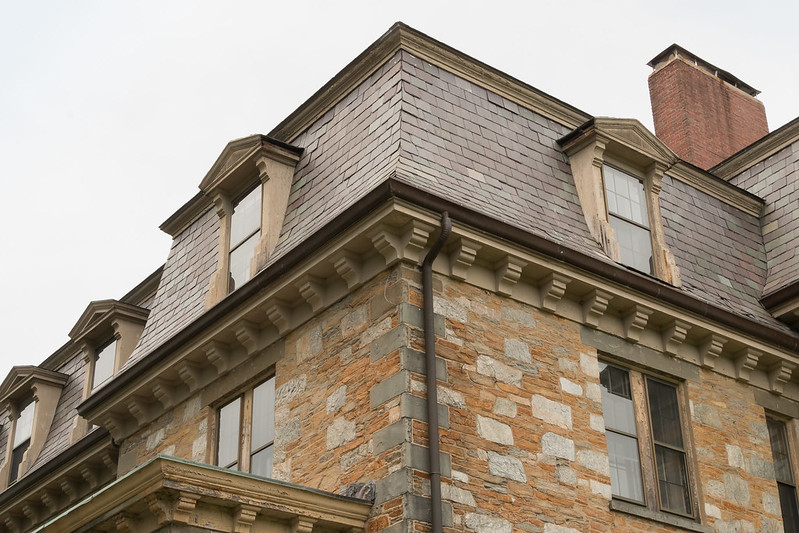Working people in Britain are paying the cost of our failure to build new homes and infrastructure over the past 50 years. Housing supply has fallen far short of demand, driving up prices, making homes harder to afford, and leaving too many people without any decent options.
Labour has pledged to build 1.5 million homes over this Parliament to address the crisis. But to do so, we need to fix the planning system, streamline decision-making, and ensure that land is available for new homes.
The Planning and Infrastructure Bill, recently introduced by the Labour Government, is a major step towards achieving these goals. By cutting unnecessary hurdles, freeing up land, and ensuring local authorities have the tools to support housebuilding, this Bill will increase the number of homes built and make housebuilding faster, fairer, and more predictable.
Faster planning decisions
A major barrier to house building in the UK is the slow and unpredictable planning process. This is bad for everyone — it annoys local people as they cannot be sure if or when building will commence; it makes building more costly as housebuilders have to spend more on lawyers and consultants; and it frustrates councils as it delays targets to meet local housing needs. The new Bill introduces several key reforms to make planning decisions quicker and more efficient:
- Cutting unnecessary delays: The Bill streamlines the process for approving planning applications, ensuring that unnecessary bureaucracy does not hold back development. It will reduce the number of statutory consultees from over 25 to a more manageable size that ensures that council time isn’t wasted.
- Delegating more decisions to planning officers: A national scheme will determine which planning applications can be approved by officers rather than committees, helping to reduce unnecessary delays and saves committee time for the big decisions.
- Mandatory training for planning committee members: Poor decision-making and a lack of confidence at the local level can often hold up new homes. Under the Bill, planning committee members will need training and certification before making decisions, ensuring they understand the planning system.
- Councils can set their own planning fees: This will ensure local planning authorities (LPAs) are properly resourced and can invest in service quality improvements.
These changes will mean that planning applications are determined faster, with greater consistency and fewer bureaucratic delays.
Making development work for communities
The Bill will make it easier for the Government to take action and deal with the housing crisis. Too often landowners and vested interests make it difficult to build the homes we need. The Bill tackles this issue by making more land available at a fairer price:
- Compulsory Purchase Order (CPO) reform: Local authorities will have more power to buy land for development at lower prices by removing ‘hope value’ — the speculative premium that landowners expect based on future planning permissions.
- Stronger powers for Development Corporations: These public bodies will be given greater flexibility to plan and deliver large-scale housing projects, ensuring that major new communities are built in a coordinated and strategic way.
- New Spatial Development Strategies (SDS): Combined authorities will be required to create regional housing plans, setting targets and identifying growth areas. This will enable cross-boundary cooperation, ensuring housing needs are met across multiple local areas.
These reforms will prevent land speculation from driving up costs, making new housing developments more viable.
Making housebuilding happen
Major housing developments often get stuck in a cycle of delays and legal challenges, even after receiving approval. The Bill includes measures to streamline large-scale developments:
- Faster approval for Nationally Significant Infrastructure Projects (NSIPs): Large housing-led infrastructure projects will no longer be bogged down in endless consultation and legal battles.
- Regular updates to National Policy Statements (NPSs): These statements guide major infrastructure and housing decisions. The Bill requires updates every five years to ensure policies remain aligned with housing targets and investment needs.
- Limiting judicial review challenges: The Bill removes paper permission stages for judicial reviews and restricts appeals for cases deemed “totally without merit”, preventing frivolous legal actions from delaying housing projects.
By ensuring that major housing developments proceed quickly and efficiently, the Bill will unlock thousands of new homes that would otherwise be stuck in legal and bureaucratic limbo.
Infrastructure and energy reform to support new homes
A lack of supporting infrastructure can be a major barrier to housebuilding. The Bill tackles this by ensuring transport, energy, and utilities can keep pace with new developments:
- Better transport planning: Faster approvals for road, rail, and public transport projects will ensure new homes are built with the necessary connectivity.
- Electricity grid reform: The shift to a “first ready, first connected” system for energy projects will prevent housing developments from being delayed by slow grid connections.
- EV charging expansion: The Bill removes licensing barriers for installing electric vehicle charging points, ensuring new housing developments are future-proofed for sustainable transport.
By addressing infrastructure bottlenecks, these reforms will remove key barriers that prevent new housing developments from being delivered at scale.
Labour to get Britain building
Labour’s Planning and Infrastructure Bill represents the biggest planning reform in a generation. By speeding up planning approvals, unlocking land for development, and ensuring infrastructure keeps pace with growth, it lays the groundwork for the Government’s ambition to deliver 1.5 million homes over this Parliament.
For too long, a broken planning system has stifled communities, locking out renters and first-time buyers. With this Bill, Labour is removing some key obstacles, creating a fairer system, and getting Britain building again.
If we want to solve the housing crisis, we need bold action. The bill is a great foundation to deliver it.


